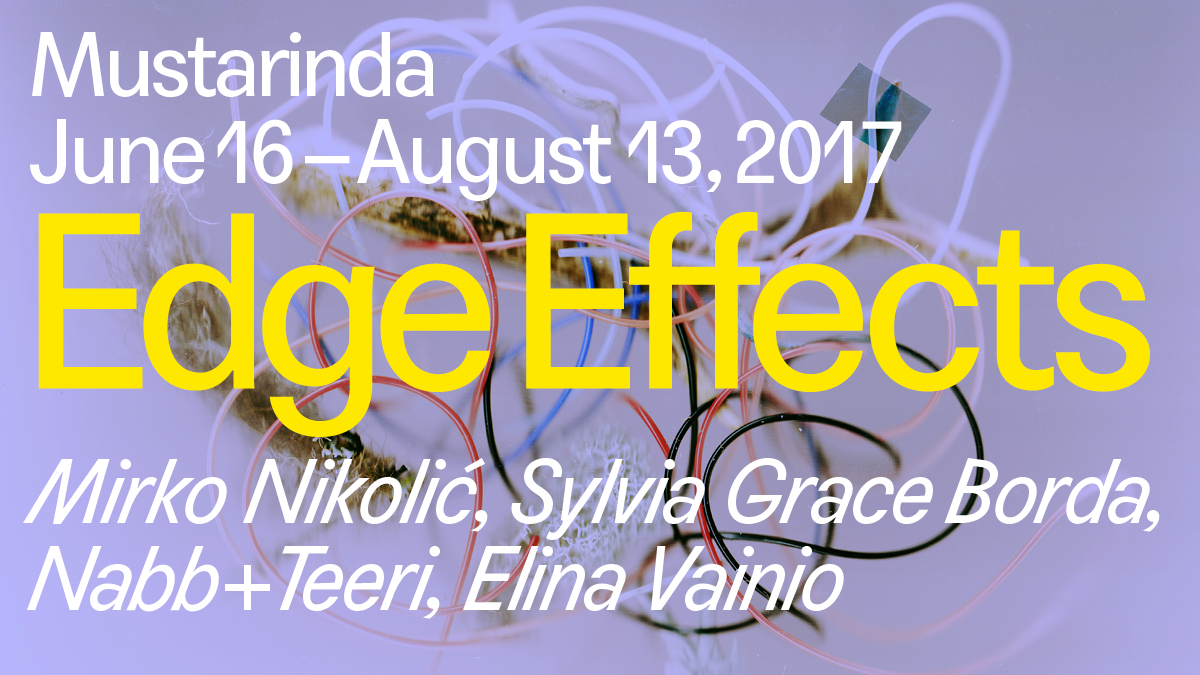28 Nov 2018
Events
Frontiers in Retreat: Edge Effects Mustarinda
Mustarinda 2017 – Edge Effects is one of the seven chapters of a multipolar exhibition series organised by the five-year Frontiers in Retreat project, a collaborative artistic and scientific enquiry into the intersections of art and ecology. The exhibition series weaves together the geographically dispersed processes and key discourses on art and ecology developed during the past four years of Frontiers in Retreat.
The artists of the exhibition are Sylvia Grace Borda, Nabb+Teeri, mirko nikolić and Elina Vainio.
Sylvia Grace Borda (Canada) worked in Mustarinda’s residency in Spring 2016. She presents two series of works in the exhibition. Snow Cameras was a collaboration between Sylvia and artist J. Keith Donnelly. The artists worked together at Mustarinda to create the first ever biodegradable cameras made from snow. Each snow structure incorporated a lens and a movable screen to make a fully operational camera obscura. The snow cameras offered passersby a place from which to view unexpected transitory images from the forest surroundings that constantly shifted depending on times of day and outdoor temperatures. In the process, these artworks became reflectors of environmental change and our connectivity to place. In Living Pictures, Sylvia Grace Borda re-imagined the use of ‘hunting cameras’ to explore the role of nature self-authoring its own pictures. Sylvia worked with local area hunters, Heimo Mikkola and Markku Mertanen, to learn of the wider eco-systems around Hyrynsalmi. The hunting cameras were placed in discrete locations to record the movements of migrating animals. The images captured from the hunting cameras were then re-animated into flipbooks. These flipbook images of living nature contrast the seemingly empty and temporal spaces of what lies beyond human encounter. The final artwork is not intended to diminish the power ‘of being in nature’. Rather respect for nature, in the words of the hunters, can only come from direct experiences such as seeing and observing wildlife.
Artist duo Nabb+Teeri (Finland) started to work with methodical series of focal exercises (lat. focus, fireplace) in Centre d’Art i Natura Farrera’s residency in Catalonia, in Spring 2015. Focality is a condition of objects and practices that requires concentration, commitment and dedication and has a deep, often intergenerational relation to its site of origin. The paradoxical attempt to reach some kind of focal ways of being and of artistic work in the geographies of artist residencies has later brought them to Serbia, KC Grad residency in Autumn 2016, and to HIAP residency in Suomenlinna, Helsinki in Spring 2017. Their video work Thinking of Invertebrates consists of diary entries made during the residency period in Serbia and an episodic 3D animation. Nabb+Teeri will continue their long-term processes in Mustarinda residency in January 2018.
mirko nikolić’s (Serbia/Finland) ongoing artistic research project we heart copper & copper hearts us is an analysis of current power structures of extractivist complex, combined with site-specific (pre)enactments of alternative forms of collaboration with the earth. Multispecies intra-actions have taken place across various locations in Southern Finland (2015-6), United Kingdom (2015-7) and Serbia (2015-6). The material-discursive performances attempt to unwork unilateral desires of appropriation, and to invite more intimate and consensual entanglements of lithic and human affects. Nikolić worked in Mustarinda’s residency in May 2017 and continues his residency in August, with a workshop for pupils of the Moisiovaara primary school.
Elina Vainio (Finland) participates in the exhibition with a variation of the installation Tools of an imagined depression period buried in future (2017), realised earlier in the year for an exhibition at Oksasenkatu 11 gallery in Helsinki. Similarly to this work, the installation at Mustarinda will comprise primarily of sand and found objects and will attempt to function as a kind of spatially specific, sparsely set out site around which ideas of human technical aptitude, competence and adaptability are questioned through notions of arid living conditions that wane out life in its many forms. In addition to pointing to dry and waterless material conditions, sand provides an expanded frame for understanding time in several thousand year stretches during which rocks have broken off, gotten smaller and become individual grains of sand. Also, as a constantly shifting body of matter that can spread itself over large areas and across continents, sand is analogous to a sense of uncontrollability and uncertainty that often characterise conceptions of future.
Mustarinda’s exhibition is funded by EU Commission’s Culture Programme, Ministry of Education and Culture, and Alfred Kordelin Foundation.

